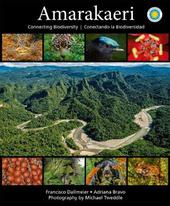
|
Amarakaeri: Connecting Biodiversity
Hardback
Main Details
Description
Highlighting the enormous biodiversity of the Amarakaeri Communal Reserve (ACR) and the critical role this protected area plays in the conservation of Madre de Dios, in southeastern Peru, AMARAKAERI offers readers a glimpse into the extensive research conducted by scholars from the Smithsonian National Zoo and Conservation Biology Institute and their Peruvian counterparts. For three years, scientists and local experts had the extraordinary opportunity to collect data to determine potential impacts on selected animal and plant groups in the areas surrounding an exploratory gas platform in the premontane forests of the ACR. AMARAKAERI portrays the main threats to the ACR and presents a vision for the region's future. Through more than 1,000 vivid and compelling photographs, AMARAKAERI presents an overview of Madre de Dios, the ACR and the ecosystem services provided by Amazonian tropical forests, followed by diversity chapters covering a sample of the unique birds, amphibians, reptiles, mammals, arthropods and plants that make the ACR their home. The book highlights the critical role the ACR plays in the conservation of the Madre de Dios landscape and its importance as a keystone to ensure connectivity throughout the Vilcabamba-Amboro Conservation Corridor of South America.
Author Biography
Francisco Dallmeier is director of the Center for Conservation and Sustainability of the Smithsonian's National Zoo and Conservation Biology Institute. Adriana Bravo is a Peruvian biologist interested in tropical ecology, conservation biology and education. Michael Tweedle is a wildlife and conservation photographer. He studied Audiovisual Communications in Lima, Peru. His work has been published worldwide and recognised with awards at exhibitions and art fairs.
|